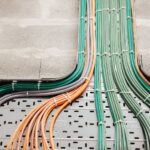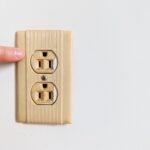When it comes to modern bathroom design, installing a shower linear drain is not just about aesthetics; it’s about functionality and longevity. The real challenge lies in ensuring that the installation is thoroughly waterproofed to protect your bathroom from inevitable water exposure. This article delves into the importance of waterproofing installation methods that can help safeguard your bathroom from potential water damage.
- Choosing the Right Materials: Discover the best waterproofing materials essential for an effective shower linear drain installation.
- Membrane Systems Enhanced Waterproofing: Learn about the advantages of membrane systems and how to apply them correctly to avoid common pitfalls.
- Optimal Drainage Design: Explore strategic design choices that improve drainage efficiency while maintaining waterproofing effectiveness.
By mastering the right waterproofing techniques, you ensure not just the aesthetic appeal of your shower design but also its durability and effectiveness. So, whether you’re renovating or installing a new shower, equipping yourself with these insights might be the cornerstone to achieving a perfect bathroom setup.
Choosing the Right Materials for Shower Linear Drain Installation: Waterproofing Methods
When embarking on a shower linear drain installation, selecting the appropriate waterproofing materials is crucial to ensure a watertight environment. The use of high-quality waterproof materials can prevent leaks, protect structural integrity, and maintain the long-term functionality of the bathroom.
One common choice is liquid waterproofing membranes, valued for their flexibility and ease of application. These polymers can be applied directly onto the floor and walls, creating a seamless barrier that adapts to the contours of the surface.
Another key material is the sheet waterproofing membrane, which consists of pre-formed layers. These are typically constructed from polyethylene or rubber and are known for their durability. They provide an effective solution for larger areas due to their uniformity and strength.
In addition to these, the use of cementitious waterproofing products is prevalent, especially in areas where a strong bond is necessary. Mixed with a latex-based additive, this method forms a robust protective barrier.
The benefits of selecting the right waterproofing materials are manifold, including enhanced drainage efficiency, superior protection against water infiltration, and increased lifespan of the installation. By understanding and choosing the right materials, you lay the foundation for a successful and resilient shower linear drain system.
Applying Membrane Systems for Enhanced Waterproofing
Membrane systems play a pivotal role in achieving enhanced waterproofing in shower installations. These systems offer excellent water resistance and can effectively prevent seepage into adjoining structures.
The application process begins with meticulously preparing the surface. Ensure it is clean, dry, and free of any debris that might hinder adhesion. Upon preparation, liquid membranes can be brushed, sprayed, or rolled onto the surface, providing a uniform protective layer. The sheet membranes should be carefully cut to size and laid with overlapping seams to prevent gaps.
While membrane application can seem straightforward, attention to detail is paramount. Common mistakes include insufficient layering of liquid membrane and improper seam sealing with sheet systems. Overlapping each layer by a few inches ensures an unbroken seal and maximizes waterproofing integrity.
Utilizing membrane systems correctly can enhance the bathroom’s resistance to mold and mildew, further protecting the home’s infrastructure. By following these guidelines and avoiding common pitfalls, you can install a reliable and efficient shower linear drain system that stands the test of time.
Integrating Drainage Design in Shower Linear Drain Installation: Waterproofing Methods
Incorporating an effective drainage design is crucial for the successful installation of shower linear drains. It not only enhances the waterproofing methods employed but also ensures optimal drainage efficiency. In this section, we delve into the strategic choices involved in drainage design that are essential for maintaining a watertight shower environment.
When planning your shower installation, selecting the right linear drain placement plays a pivotal role. Positioning the drain along the periphery of the shower space efficiently manages the water flow and prevents pooling.
A well-thought-out drainage slope is vital in directing water towards the drain. The recommended slope typically ranges from 1% to 2%, ensuring that water flows smoothly while avoiding an excessive incline that can lead to discomfort underfoot.
Moreover, incorporating proper sealants at junctions between the floor and the linear drain is imperative. This enhances the watertight integrity of the shower system and guards against potential seepage.
In addition to design considerations, choosing high-quality drain components ensures long-term performance. Stainless steel or corrosion-resistant materials are often preferred for their durability and resistance to moisture-related degradation.
Each of these design considerations not only contributes to effective waterproofing but also enhances the overall aesthetic of your bathroom by integrating seamlessly with the flooring.
It is crucial to remember that the integration of drainage design in shower linear drain installation requires precision. Consulting with professional installers is advisable to tailor these methods effectively to your specific requirements. In doing so, you will achieve a harmonious blend of functionality and style in your bathroom setup.
Frequently Asked Questions about Shower Linear Drain Installation and Waterproofing
What materials are best for waterproofing a shower linear drain?
Waterproof membranes and liquid sealants are ideal for ensuring a watertight shower installation.
How does a membrane system enhance waterproofing?
A membrane system creates a continuous barrier that prevents water seepage, significantly enhancing waterproofing effectiveness.
What are common mistakes when applying waterproof membranes?
Common mistakes include improper adherence, not overlapping seams, and inadequate curing time.
How can I optimize drainage design for my shower?
Ensure the correct slope towards the drain and integrate the drain placement into the overall design for efficient water flow.
Why is professional consultation important in shower waterproofing?
Professionals provide tailored solutions and ensure compliance with industry standards, reducing the risk of leaks and damage.





